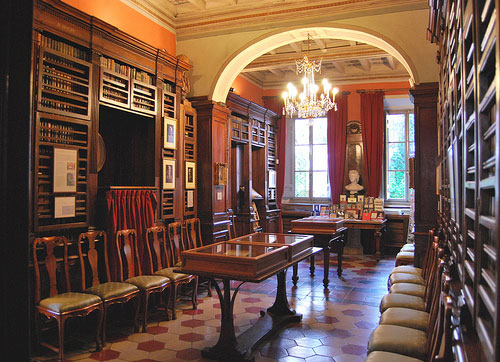Perhaps one of the greatest contrasts of Rome lies south of the Capitoline Hill in the populous neighborhood of Testaccio, at the foot of the mountain of which takes its name. Unlike the nearby Aventine, the exclusive and quiet neighborhood that attracted writers and philosophers of ancient Rome, Testaccio has always been one of the busiest and most popular districts of the city, the perfect place to discover and observe the very essence of Roman life. You can find traditional grocery stores, antique markets, old factories, slaughterhouses and an assortment of vibrant restaurants, bars and clubs animation that prolong the day until the wee hours, making this a beloved area for nightlife.

It is, however this neighborhood which is site where one of the most interesting landmarks of Rome: the Cimiterio Acattolico (Via Caio Cestio, 6). As its name suggests, it is simply a non-Catholic cemetery, a resting places for the bodies of Protestants, Orthodox, Buddhists, atheists and agnostics. For example, Antonio Gramsci, founder of the Italian Communist Party, a victim of fascism and perhaps one of the most suggestive and interesting thinkers of the twentieth century left, is buried here.
Its fame, however, is due mainly to the Protestants and, more specifically, the English Protestants buried there which is why it is often known as the Graveyard of the English. Among them lie poets and friends John Keats (1795-1821) and Percy B. Shelley (1792-1822), who along with compatriot Lord Byron (1788-1824), who perhaps sought his own death to fight for freedom in Greece, another country of classical antiquity. These men make up the patriarchal triumvirate of imperial British romantic poetry. Visiting Cimeterio Acattolico is not only a romantic pilgrimage but also a literary pilgrimage.
And is it poetic justice that, after death, both figures continue intertwined. After all, Shelley´s body, deformed and eaten by the fish after his boat wrecked, was only recognized by Byron because he had a book by Keats in his pocket.
 Paul Oilzum
Paul Oilzum
And on the tombstone of the latter is written the epitaph: “Here lies one whose name was writ in water” If you rent apartments in Rome, you can explore the romantic history of Rome.? ?

 English
English
